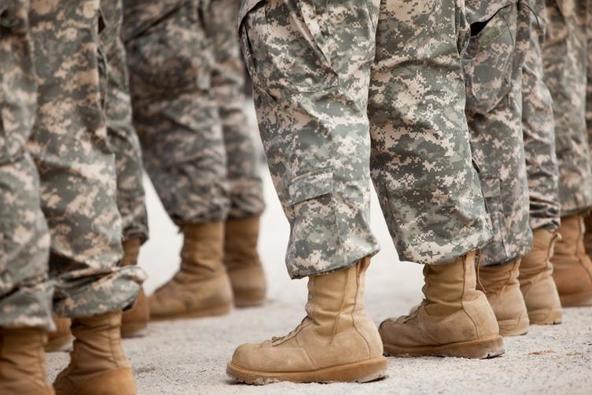UK Researcher Helps Improve Soldier Eating Habits With New App

A 2020 study by the Health of the Force-Army Public Health Center found that one in five military service members were classified as obese and had difficulty meeting Army fitness and weight standards. One of the primary culprits is a lack of knowledge about healthy food options on post. In response, the University of Kentucky College of Agriculture, Food and Environment is using innovative and interactive technology to help solve this issue.
Alison Gustafson from the UK Department of Dietetics and Human Nutrition said novel approaches are needed to help personnel, especially new recruits, maintain a healthy weight. In her recent collaborative study with the University of North Carolina at Greensboro’s Department of Nutrition, Gustafson utilized innovative technologies like Bluetooth beacons, hardware transmitters that broadcast their identifier to nearby portable electronic devices, and geofencing, which delivers real-time geo-targeted messages to mobile phones that enter a designated space, to help servicemen and women improve their eating habits.
“There is a lack of published research concerning the viability of this strategy to encourage healthy behavior in retail food contexts, especially in the military,” Gustafson said. “As a result, we decided to conduct a formative feasibility study at Fort Bragg to better understand the development, interest and implementation of this type of awareness. 'EatWellNow' is basically a behavioral nudge to make healthier choices.”
The project team developed an interactive Bluetooth messaging system to send healthy reminders in fast food areas on the North Carolina base. This interactive experience used an app the team created called "EatWellNow." During the study, 2,621 users installed the "EatWellNow" app and received push alerts when coming within 10 feet of a retail food area.
Researchers created a virtual "fence" around retail food sites as the initial layer of engagement. When a soldier entered the cellular data signal-based virtual fence, they started seeing passive notifications on smartphone apps and websites while within the food site, and when they left the virtual fence, for up to 30 days.
“We had a very high success rate,” Gustafson said. “Approximately 65% of the participants liked getting the messages. It was location-specific, which means that we know it worked. We found that these new methods of notifications helped the soldiers make a different choice about where they shopped and purchased food.”
Gustafson said the multitude of fast-food options on the base caused soldiers to gain weight, making them unfit to serve for active duty. According to the Centers for Disease Control and Prevention, obesity annually costs the U.S. Department of Defense more than $1 billion in health care expenses for active-duty service members, veterans and their families.
Gustafson said the Fort Bragg study was just the beginning of technological reminders for the public. Kentucky’s Fort Campbell will be the next study location with the ultimate goal of having the program available to the general public.
“I’ve been interested in text messaging intervention for quite a while,” Gustafson said. “I believe this is a great way for people to make healthier choices, and I’m excited for what the future of this technology holds.”
This material is based upon work supported by, or in part by, the U.S. Army Telemedicine & Advanced Technology Research Center under award number 9180. Any opinions, findings and conclusions or recommendations expressed in this material are those of the author(s) and do not necessarily reflect the view of the U.S. Army Medical Research and Development Command.
Credits
Jordan Strickler

